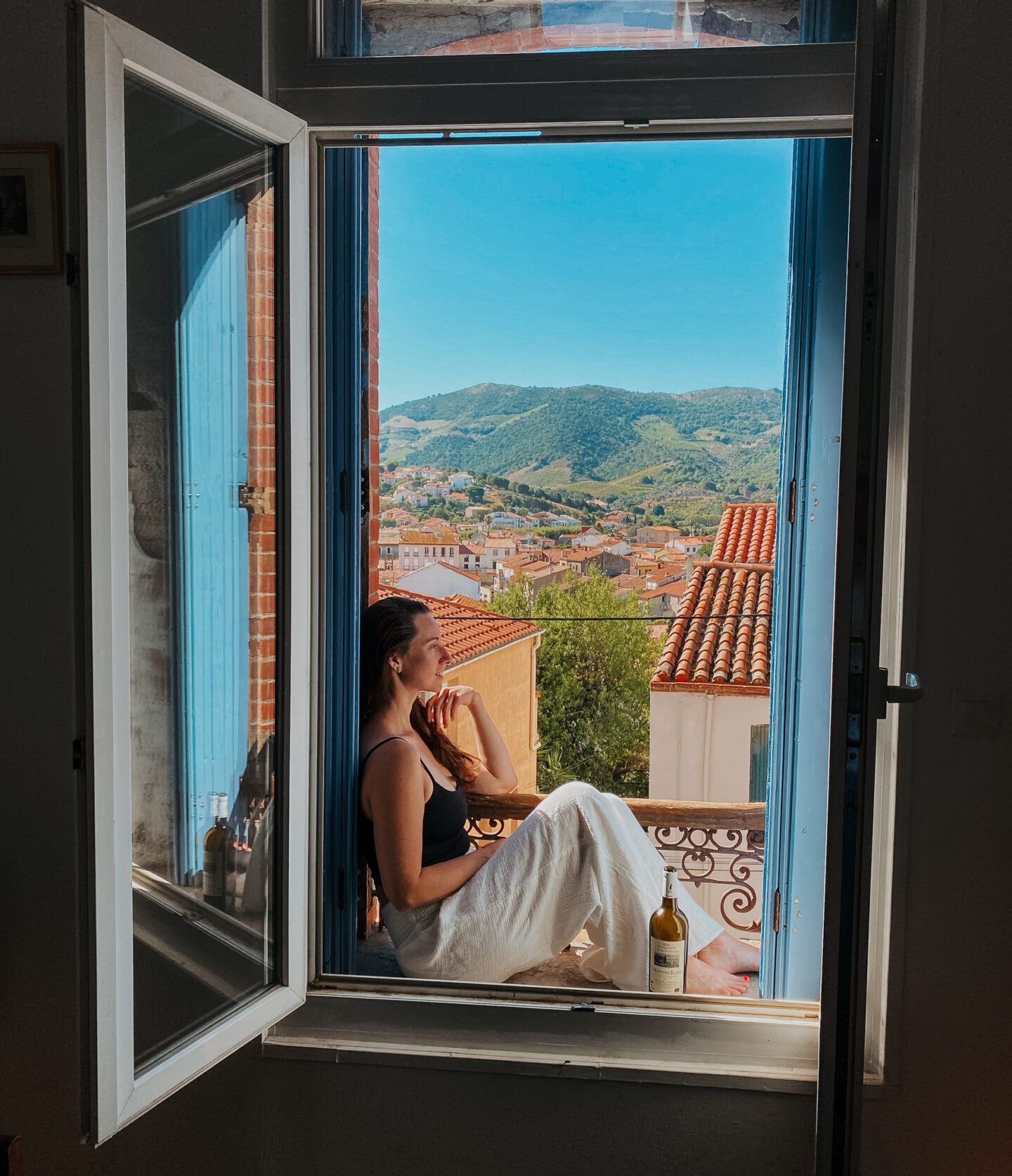
If you love discovering hidden gems and going off the beaten path, make sure to add Languedoc-Roussillon into your travel bucket list! Set amongst the beautiful scenery of southern France, this region produces some of the country’s finest wine. With more than 20 different wine appellations (category depending on geo-political boundaries), each boasting their own unique history, flavor profile and intricate production methods, the region’s vino-diversity speaks for itself. Worried that your tastes are a bit particular? Don’t let that stop you! There are over 300 wine producers in Languedoc-Roussillon offering wine for everyone. The biggest misconception made nowadays, I believe, is that regional wines are heavy, tannic and ‘hot’. This is quite simply nonsense! Below I will give more in-depth detail of the region, offering wine/accommodation/eating recommendations and debunking myths along the way.
Taking a road trip around Languedoc-Roussillon is the best way to discover the region and take advantage of all it has to offer. I did just that this summer over two weeks and what an experience it was! Whether you are looking for a foodie adventure, a relaxing beach holiday, or to learn more about French wine, L-R has something for everyone. As I talk through the different cities/towns and what they have to offer below, I will talk quite a lot about wine but if that isn’t your main interest, don’t worry – there are plenty of other things to do in the region, from exploring medieval castles to hiking in the spectacular Pyrenees mountains.
I hope my recollections are interesting and advice useful to you, I would love to hear from you so please comment below. And one final thing before I get started… CHEERS to road trip adventures!
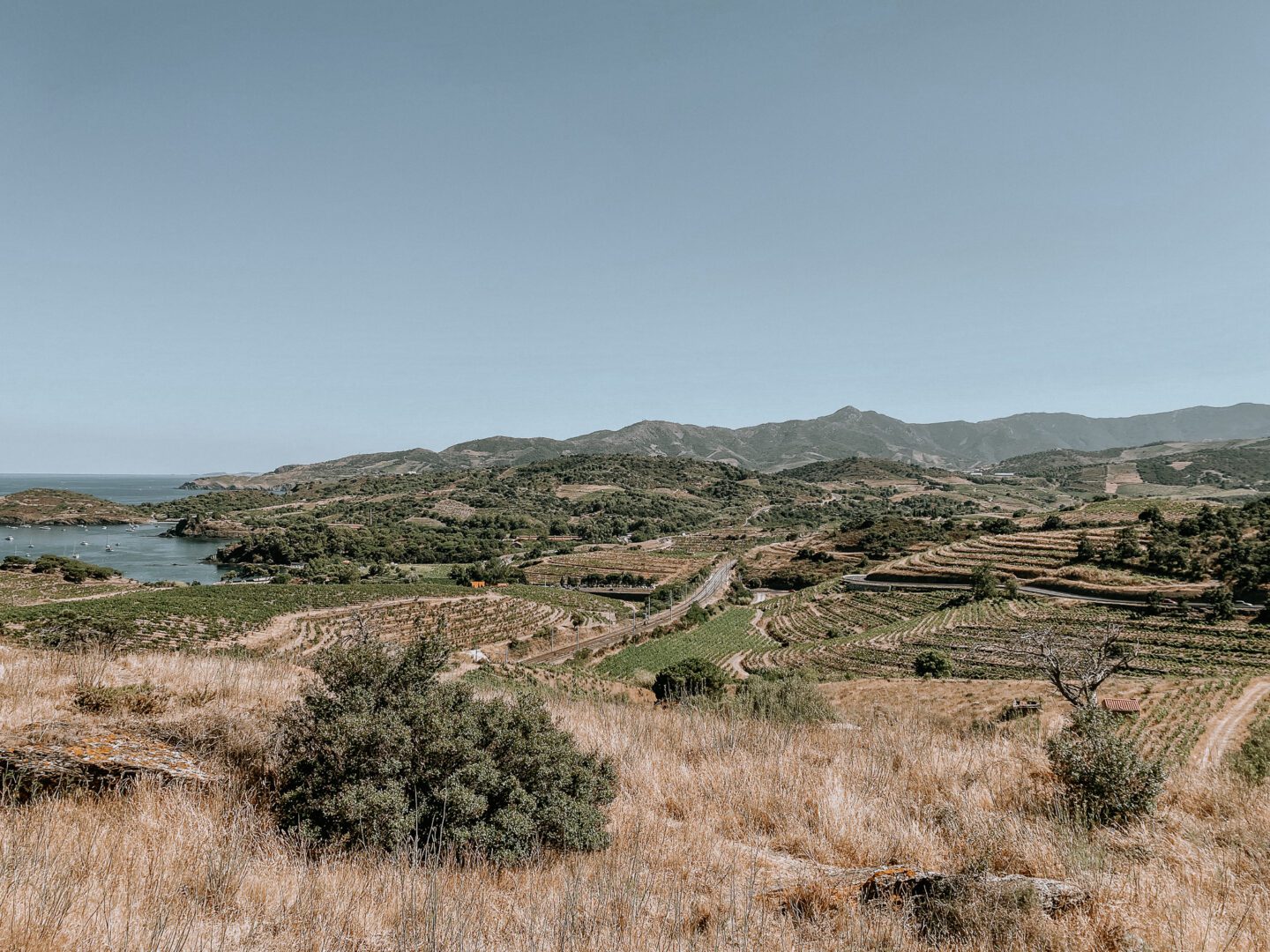
STOP #1: Banyuls-sur-Mer
Banyuls-sur-Mer is a beautiful ancient port town located on the Mediterranean Sea in southwestern France. The city is noted for its exquisite wines and stunning waterfront boasting a view of the sparkling blue sea and rocky coastline. The lively town square bustles with tourists and locals alike, while the historic center’s tiny streets and picturesque harbor offer a more peaceful experience.
We decided this would be a good place to begin our trip as we planned to continue further south to Spain. We went from Banyuls-sur-Mer across the Costa Brava, a coastal area of Catalonia in northern Spain. Stay tuned because next month I’ll be writing all there is to know about Cadaques!
Now, for you history buffs… Formerly known as Banyuls-dels-Aspres, the town was a Roman colony with its name deriving from the vineyards. Now known as Banyuls-sur-Mer, or just Banyuls, the town was a key trading and commercial hub due to its location on the Mediterranean Sea. Founded as a fishing village in the 12th century, Banyuls diversified and began exporting wine, both abroad and to other regions in France, in the 18th century, making a name for itself in the production of sweet white wine. The town’s roots were maintained for a long time and, until recently, fishing remained a large part of the local economy. For centuries, wine has been exported from Banyuls-sur-Mer’s port.
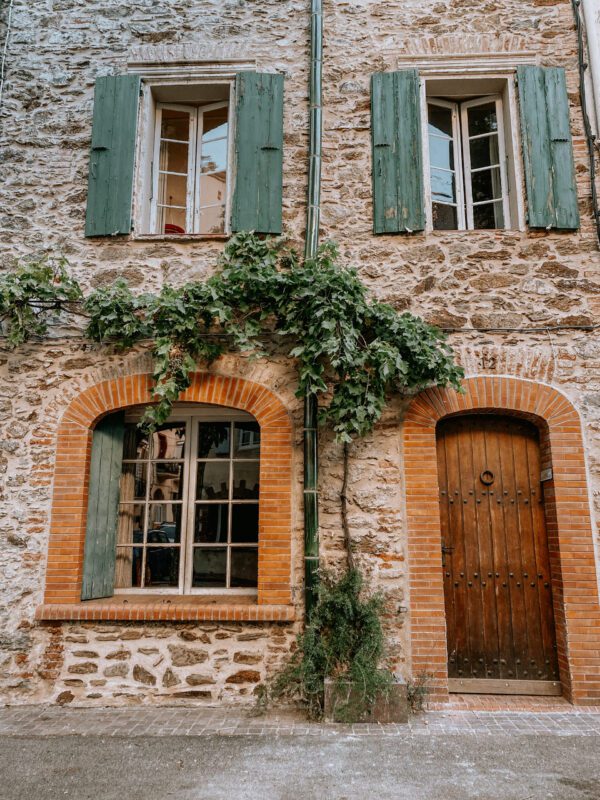


Where to Stay
We went for an apartment rented through AirBnb – a really nice place, clean and comfortable, as well as in an excellent location right in the old town, just a few minutes from the beach (link below). It even had a piano! (No, I can’t play… but I enjoy trying!) My morning work routine was definitely made more enjoyable by sitting on the rooftop terrace, drinking coffee and enjoying the amazing views.


There are more budget-friendly options available, namely a number of campsites around the area offering camping pitches and mobile home rentals. The summer months see an influx of campers who make the most of the local experience without stretching the purse strings too far.
Parking is located near the SNCF station. Depending on the distance from your chosen accommodation, this can be a really great, easy and FREE facility if you are traveling by car.
Where to Eat
Les 9 Caves
Nine winemakers came together to transform this former co-operative winery into a wine bar, hence the name ‘9 Caves’. The project was spearheaded by Natasia (the chef) and Jan-Paul Delhaas (the sommelier), who left ‘Wink’, their restaurant in Amsterdam, to take it over.
One of my most memorable dinners of the trip was here, in the nearly empty courtyard at sunset. All ingredients are locally sourced, seasonal and fresh, remaining faithful to the place’s origins. Perfectly seared white fish, generously accompanied by a cucumber and smoked red pepper salad, black trumpet mushrooms, cilantro, sesame seeds and a squid ink vinaigrette was wolfed down before moving onto an exquisite dessert of light, fluffy vanilla-caramel panna cotta drizzled with strawberry coulis. Wines can be selected by glass or bottle, allowing you to sample the local selection or go all in with a bottle of your favorite. I discovered a new producer that night, Domaine du Traginer, and fell in love. More on my favorite wine discoveries below…



Le Quintessence
A chef-owned restaurant in the heart of the old town, a stone’s throw away from the Mediterranean Sea. Delicious food and lovely ambience make it a must-visit restaurant.
What to Drink
It is gripping on the palate with a firm, lingering structure that I rarely see in a white wine. The production method includes direct pressing of strong, ripe grapes and spontaneous fermentation from naturally-occurring yeast. This is one of the first producers in the region to convert into a biodynamic winery. Safe to say, my partner was sent back the following day to secure us some bottles for home!

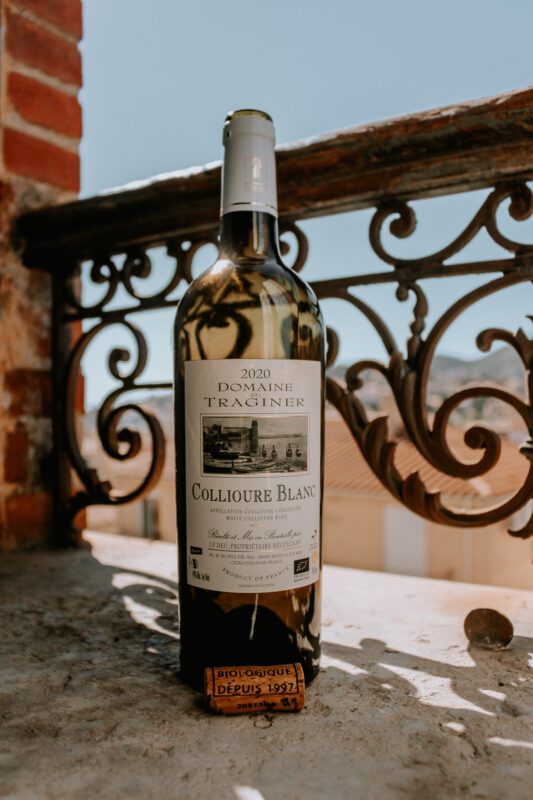
Natural winemaking by a female winemaker. Originally from the Flemish-speaking region of Belgium, Nele started the ‘De La Pampa’ estate with her partner, describing it as “a love story between a ‘Belgian grape picker’ and a ‘Catalan winegrower”. A story which began twenty years ago in the vineyards of a picturesque village where the Pyrenees emerge from the Mediterranean Sea. From their wide selection, my favorite is the Moon Juice Cuvée – a blend of Grenache and Carignan, free from any additives. You can taste all of their wares at their new store, a fun and laidback boutique called ‘Fluide’ (which, if you fancy a massage then you are in luck, serves also as a shiatsu center!)


The Banyuls AOC
AOC, Appellation d’Origine Contrôlée, is a rank given to wines produced in a specific region which reach a certain level of quality.
The most famous wine from the area is the Banyuls AOC, a sweet red made from Grenache, Mourvèdre and Carignan grapes. Still wines are labeled as ‘Collioure’ or ‘Vin France’, even if they are produced in Banyuls-sur-Mer, something to look out for!
What to Do
If a day of sun and sand is desired, you are spoilt for choice! There are several beaches in the region, each as lovely as the last. The combination of cooling down in the refreshing Mediterranean and reading under my umbrella was a much-needed and appreciated dose of relaxation.
Note #1: the winds can become quite intense! Keep an eye out for the colored flag on the beach.
Note #2: you can rent paddle boards, boat and beach chair for anywhere between 5 and 15 EUR.
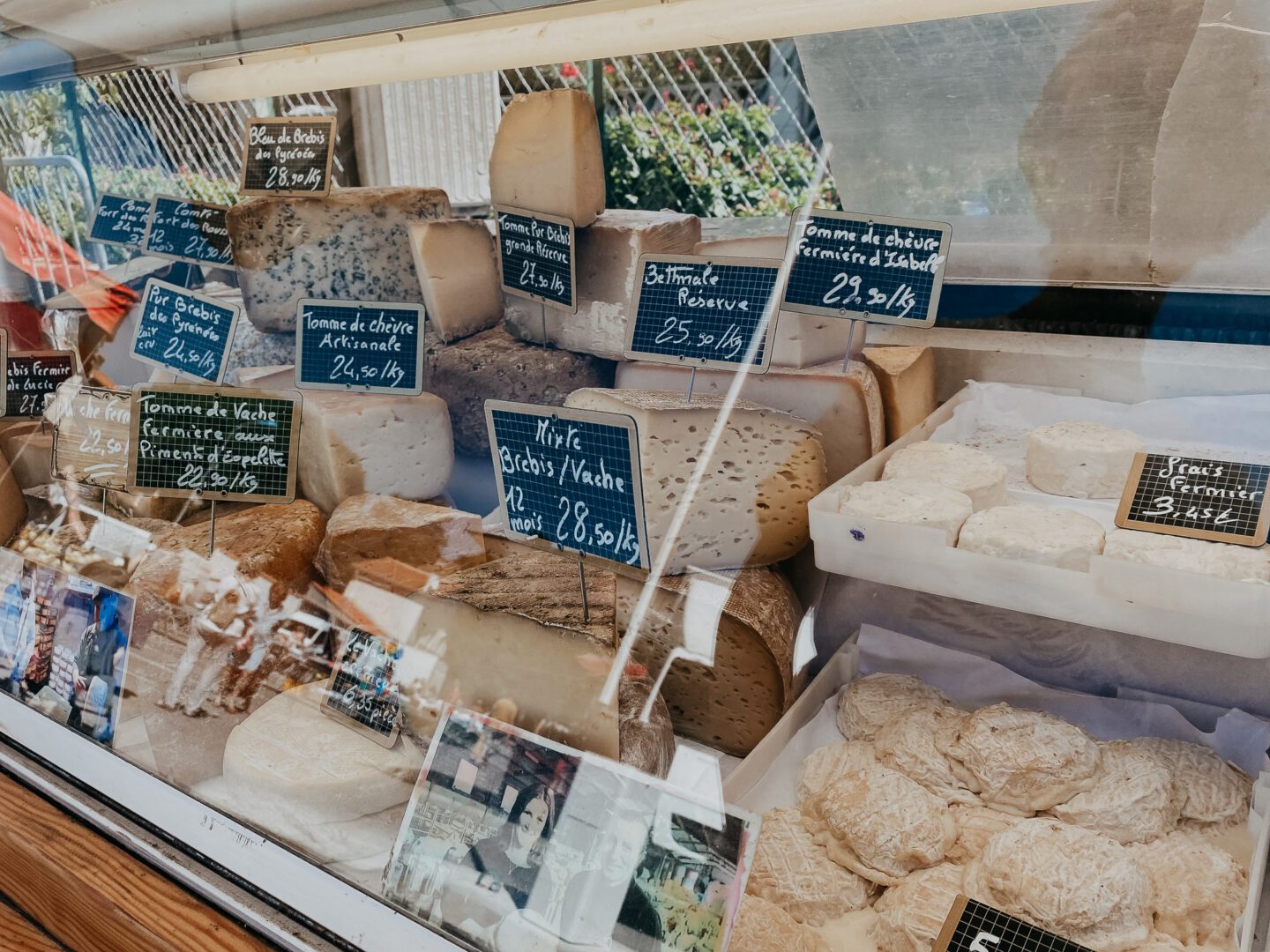
Every Thursday and Sunday morning is market time in Banyuls-sur-Mer. On offer is a wide selection of fresh fruits, vegetables, bread and so many other local and Spanish products. Believe me when I say I still dream about the Manchego cheese I bought at this market!
Banyuls-sur-Mer is the perfect base for taking day trips to explore the Catalan coastline. I took a day trip to Collioure and Port-Vendres (see below) and it was certainly worth it! The drive itself is beautifully scenic, traveling down winding roads accompanied by breathtaking cliffside views of the sea.


STOP #2: Port-Vendres and Collioure
While Port-Vendres is more commercial, with the deep harbor allowing large container ships access to the shore, Collioure is a charming fishing town with an abundance of character. I thoroughly enjoyed strolling the narrow streets, popping in and out of the local shops and stopping for lunch served with an envious view of the harbor. There is a hop on/off boat which will take you to neighboring port towns for 40 EUR, if you want to explore further.
Collioure’s rich history dates back to the 5th century BC when it was founded by the Greeks. The town is famous for its own wine (having its own AOC), picturesque harbor and medieval village. The historical sailboats floating in the shallows are a beautiful sight and perhaps the inspiration for my reoccurring fantasies of selling everything and taking up a new life at sea!
The Eglise Notre-Dame-des-Anges is a popular tourist attraction with its bell tower originally designed as a lighthouse/signal. The church’s 12th and 16th century construction phases can be observed in its Romanesque nave with Gothic rib vaults. Explore further along the walkways and you will find the Chapelle Saint-Vincent, a tiny, beautiful chapel constructed in the 18th/19th centuries to serve as a hospital for patients with leprosy.

The AOCS
Collioure (AOC) represents French wines originating around the town on Collioure in the Roussillon wine region of France. Red, rosé and some white wines are produced in this area: the reds coming from Grenache noir, Mourvèdre, Syrah, Carignan and Cinsault grapes, and the whites made from blending Grenache blanc and Grenache gris. The boundaries of the AOC are identical with the Banyuls AOC, as many of the grapes grown in Collioure are destined for use in the fortified Vins doux naturels of the region. The grapes that do not get used for Banyuls are then produced as non-fortified non-sparkling wines under the Collioure AOC.
I had no idea how much I had to say about Languedoc-Roussillon, that I should take a break here. Having covered Roussillon above, in my next article I will explore Languedoc. Please stay tuned and watch out for my next post, I promise I won’t keep you waiting long!
To be continued…

I love your travel guides! As a wine and travel enthusiast, you capture both of my passions… please continue to share!
Author
Thank you Diane! I love to connect with followers. I hope you enjoy the next installment of the Languedoc publishing this week!
Great site! I really appreciate all the interesting, up close information, along with the beautiful onsite photography.
Author
Hi William, thank you for following the blog. I do this work for readers like yourself.